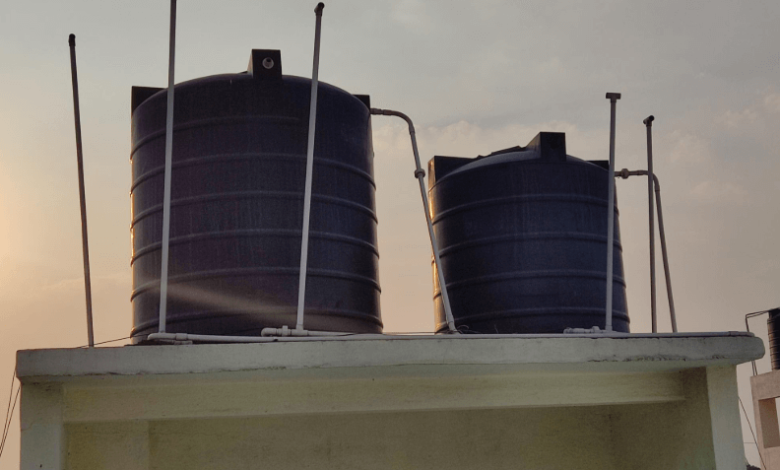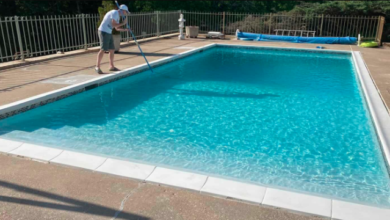Smart Storage: Choosing the Right Water Tank for Your Needs

Proper water storage is one of the most important investments you can make for your home, farm, or business. Whether you’re planning ahead for emergencies, managing water for agriculture, or simply looking to cut costs on your water bill, the right water tank can make a big difference. But with so many tank options available, how do you decide which one works best for your needs?
This guide will help you understand the different types of water tanks, key factors to consider, and practical tips for setup and maintenance so you can confidently choose the best tank for your situation.
Types of Water Tanks
When it comes to water tanks, one size (or material) definitely doesn’t fit all. Different tank types serve different purposes, and understanding the pros and cons of each can help guide your decision.
1. Plastic Water Tanks
Plastic water tanks, also known as polyethylene or poly tanks, are among the most popular options for water storage. Here’s why:
Pros:
- Lightweight and easy to install: Plastic tanks are much easier to move and set up than heavier options like concrete or steel.
- Cost-effective: Generally more affordable compared to steel or concrete tanks.
- Durable: Resistant to rust and corrosion, even in humid or coastal areas.
- Variety of sizes and shapes: Available in different capacities, making them suitable for small homes or large-scale agricultural needs.
See also: Maximising Your Property’s Value: Essential Selling Tips for Langley Homeowners
Cons:
- Susceptible to UV damage: Exposure to sunlight over time can cause material degradation. Opt for UV-stabilized tanks to mitigate this.
- Limited lifespan compared to steel or concrete.
2. Steel Water Tanks
Steel water tanks are a popular choice where durability and aesthetics are key concerns.
Pros:
- Strong and long-lasting: Ideal for areas prone to harsh weather conditions.
- Customizable with liners for drinking water or chemical compatibility.
- Appealing visual design for homeowners who value aesthetics.
Cons:
- Higher initial cost than plastic tanks.
- Prone to rust if not properly galvanized or coated.
- Challenging to move once installed due to their weight.
3. Concrete Water Tanks
Concrete tanks are robust, withstanding extreme conditions and time with relative ease.
Pros:
- Extremely durable with a potential lifespan of several decades.
- Immune to UV degradation and resistant to natural disasters like bushfires.
- Ideal for underground storage where space is limited.
Cons:
- Expensive to install, both in terms of material and labor.
- Heavy and permanent, making them hard to relocate.
- May require regular sealing to prevent leaks over time.
Understanding these three main types can help you weigh the trade-offs between cost, durability, and functionality, leading you to the best choice for your water storage.
Factors to Consider When Choosing a Water Tank
Your decision shouldn’t just depend on the tank type; you’ll need to think about your unique requirements. Here are four key factors to consider:
1. Size and Capacity
Ask yourself questions like:
- How much water do I need to store?
- What’s the average rainfall in my area if I’m reserving rainwater?
- How much space do I have available for the tank?
For small households, a 1,000–2,000-gallon tank might be sufficient. For farming operations, larger tanks in the 10,000–20,000-gallon range may be necessary. Always aim for a size that can handle both your regular and emergency water needs.
2. Material
Choose the material based on your usage. Plastic may be perfect for lightweight solutions, while steel or concrete might work best for those prioritizing longevity or underground systems.
3. Location
Decide where the tank will be placed:
- Aboveground tanks are easier to install and maintain but might be subject to external wear and tear.
- Underground tanks save space but require additional labor and installation costs.
Also, consider proximity to water sources and outlets for optimal ease of use.
4. Budget
Finally, affordability plays a big role. While plastic tanks are cost-effective upfront, steel or concrete options might save money in the long term due to their durability. Be sure to factor in installation and maintenance costs when drawing up your budget.
Installation Tips for a Seamless Setup
Once you’ve chosen the right tank, proper installation is crucial to ensure efficiency and longevity. Follow these simple tips:
1. Prepare a Stable Base
Create a smooth and level foundation for your tank. A concrete slab or compacted sand base is ideal.
2. Check Local Regulations
Some localities have specific rules about water storage systems. Always check zoning restrictions, permits, and guidelines before installation.
3. Position Strategically
Place the tank under a roof or near a reliable water source for effortless rainwater collection or refilling.
4. Install First-Flush Systems
If collecting rainwater, incorporate a first-flush diverter to keep debris and contaminants from entering your tank.
5. Hire Professionals for Large Tanks
For steel or concrete tanks, professional installation will not only ease the process but ensure that all safety requirements are met.
6. Test Your System
Check for leaks, make sure valves function correctly, and verify that hoses or pipes are properly connected.
Maintenance Tips to Ensure Longevity and Water Quality
A water tank is a valuable investment, but to get the most out of it, regular maintenance is non-negotiable.
1. Clean Your Tank
- Drain the tank and clean it thoroughly at least once a year to remove sediment buildup.
- If you’re using the tank for drinking water, sanitize it with a mild chlorine solution.
2. Inspect Your Tank Regularly
Check for cracks, leaks, rust, or damage. Fix small issues promptly to prevent them from worsening.
3. Protect Against Algae
For aboveground tanks, block sunlight to reduce algae growth. Use a dark-colored tank or a tank cover as additional protection.
4. Maintain Fittings and Filters
Keep taps, outlets, and filters in good condition. Replace filters periodically to ensure clean water flow.
5. Monitor Water Quality
If your tank stores drinking water, test it periodically for contamination using water-testing kits.
By following these maintenance practices, you’re not just extending the life of your tank, but also ensuring safe, clean water for years to come.
Making Smart Storage Decisions
Choosing the right water tank is more than just selecting a container. It’s about thinking through your water usage needs, available space, budget, and environmental considerations so you can invest in a solution that grows with you.
With options like lightweight plastic, durable steel, or robust concrete tanks, you’re spoiled for choice. And by incorporating the installation and maintenance tips shared here, the process becomes seamless.
Need advice tailored to your needs? Contact our experts or check out our water tank selection guide to find the perfect fit today.







